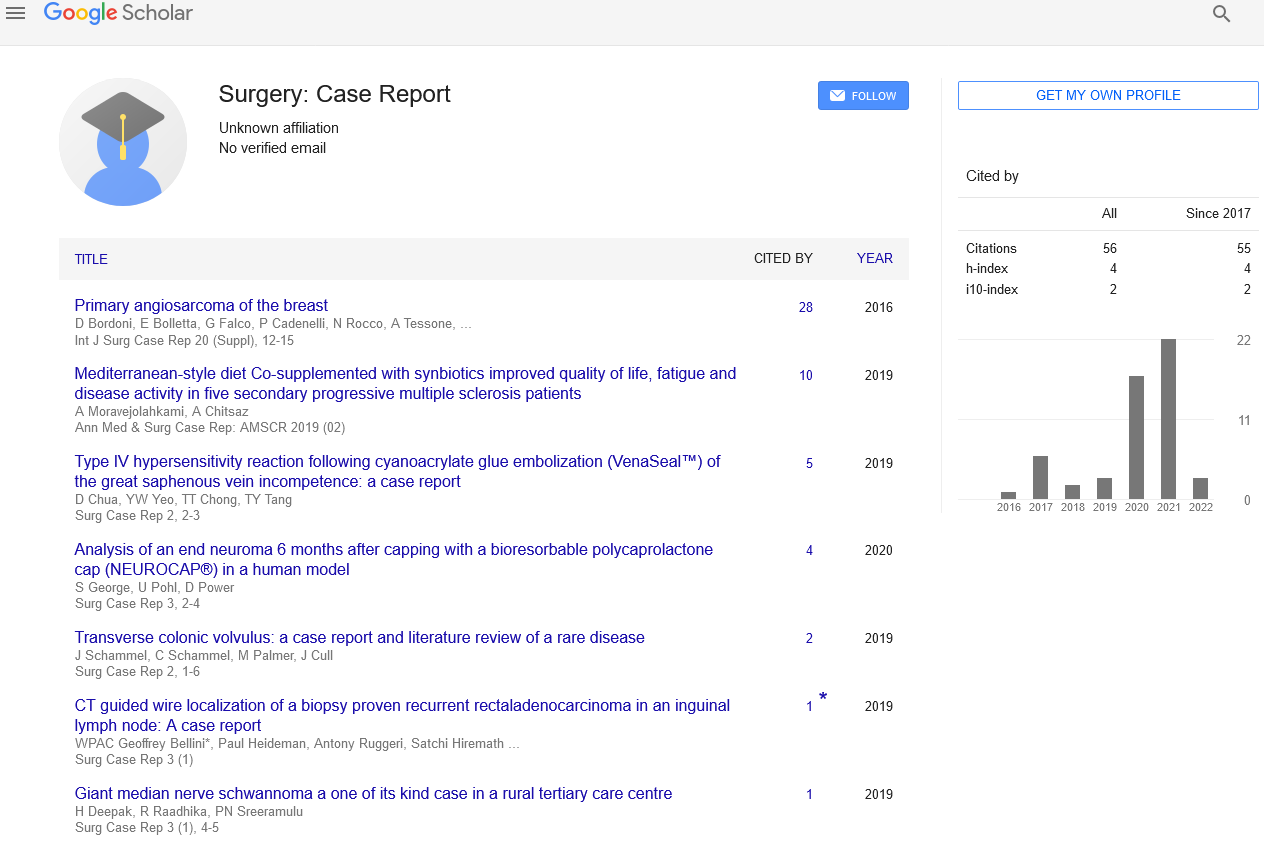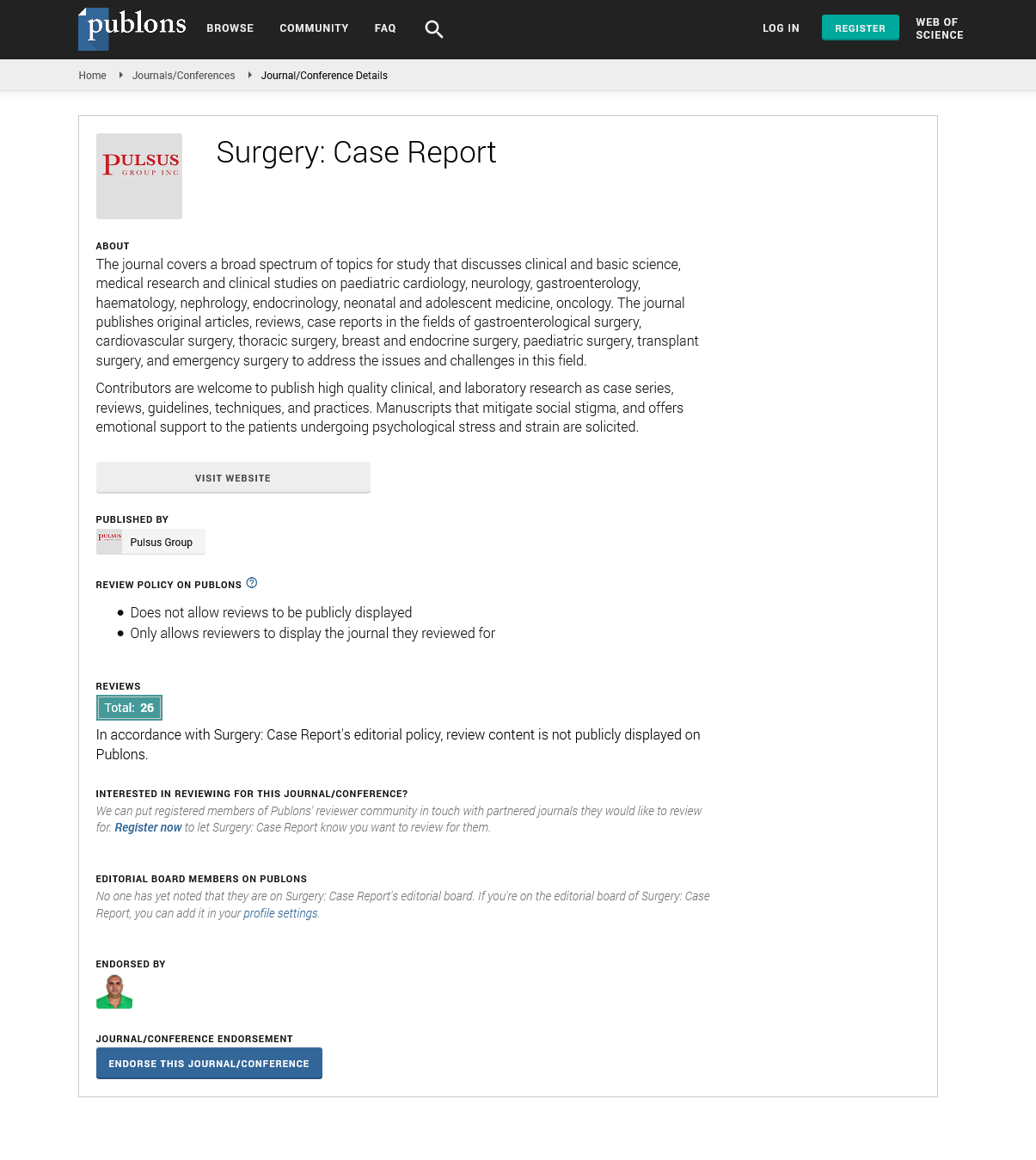Short Communication on Heart Transplantation
Received: 06-Nov-2020 Accepted Date: Nov 23, 2020; Published: 30-Nov-2020
Citation: Chandra Has D. Short Communication on Heart Transplantation. Surg Case Rep 2020;4:3.1
This open-access article is distributed under the terms of the Creative Commons Attribution Non-Commercial License (CC BY-NC) (http://creativecommons.org/licenses/by-nc/4.0/), which permits reuse, distribution and reproduction of the article, provided that the original work is properly cited and the reuse is restricted to noncommercial purposes. For commercial reuse, contact reprints@pulsus.com
Short Communication
A heart transplant (or cardiac transplant) is an operation in which a diseased, failing heart is replaced with a healthier donor heart. Heart transplant is a treatment that’s usually reserved for people whose condition
hasn’t improved enough with medications or other surgeries.
The first real organ transplants were probably skin grafts that may have been done in India as early as the second century B.C. The first heart transplant in any animal is credited to Vladimer Demikhov. Working in Moscow in 1946, Demikhov switched the hearts between two dogs. The dogs survived the surgery. The first heart transplant in human beings was done in South Africa in 1967 by Dr. Christiaan Barnard; the patient only lived 18 days. Most of the research that led to successful heart transplantation took place in the United States at Stanford University under the leadership of Dr. Norman Shumway. Once Stanford started reporting better results, other centers started doing heart transplants. The successful transplantation of a human heart was not ready for widespread clinical application until medications were developed to prevent the recipient from “rejecting” the donor heart. This happened in 1983 when the FDA approved a drug called cyclosporine. Before the advent of cyclosporine, overall results of heart transplant were not very good.
Reason for Transplantation
The transplantations are performed when other treatments for heart problems haven’t worked, leading to heart failure. In adults, heart failure can be caused by:
• A weakening of the heart muscle
• Coronary artery disease
• Heart valve disease
• congenital heart defect
• Dangerous recurring abnormal heart rhythms not controlled by other treatments
• Failure of a previous heart transplant
In children, heart failure is most often caused by either a congenital heart defect or cardiomyopathy.
Multi-organ transplants include: Heart-kidney transplant, Heart-liver transplant, Heart-lung transplant.
Risk factors
The risks of having open-heart surgery include bleeding, infection and blood clots. There are few more risks of a heart transplant that include:
• Rejection of the donor heart.
• Problems with your arteries.
• Medication side effects.
• Cancer.
• Infection.
Most people who receive a heart transplant enjoy a good quality of life. Depending on your condition, you may be able to resume many of your daily life activities. Some women who have had heart transplants can become pregnant. However, talk to your doctor if you’re considering having children after your transplant. You’ll likely need medication adjustments before becoming pregnant, as some medications can cause pregnancy complications. Survival rates after heart transplantation vary based on a number of factors. Survival rates continue to improve despite an increase in older and higher risk heart transplant recipients. Worldwide, the overall survival rate is more than 85% after one year and about 69% after five years for adults.






